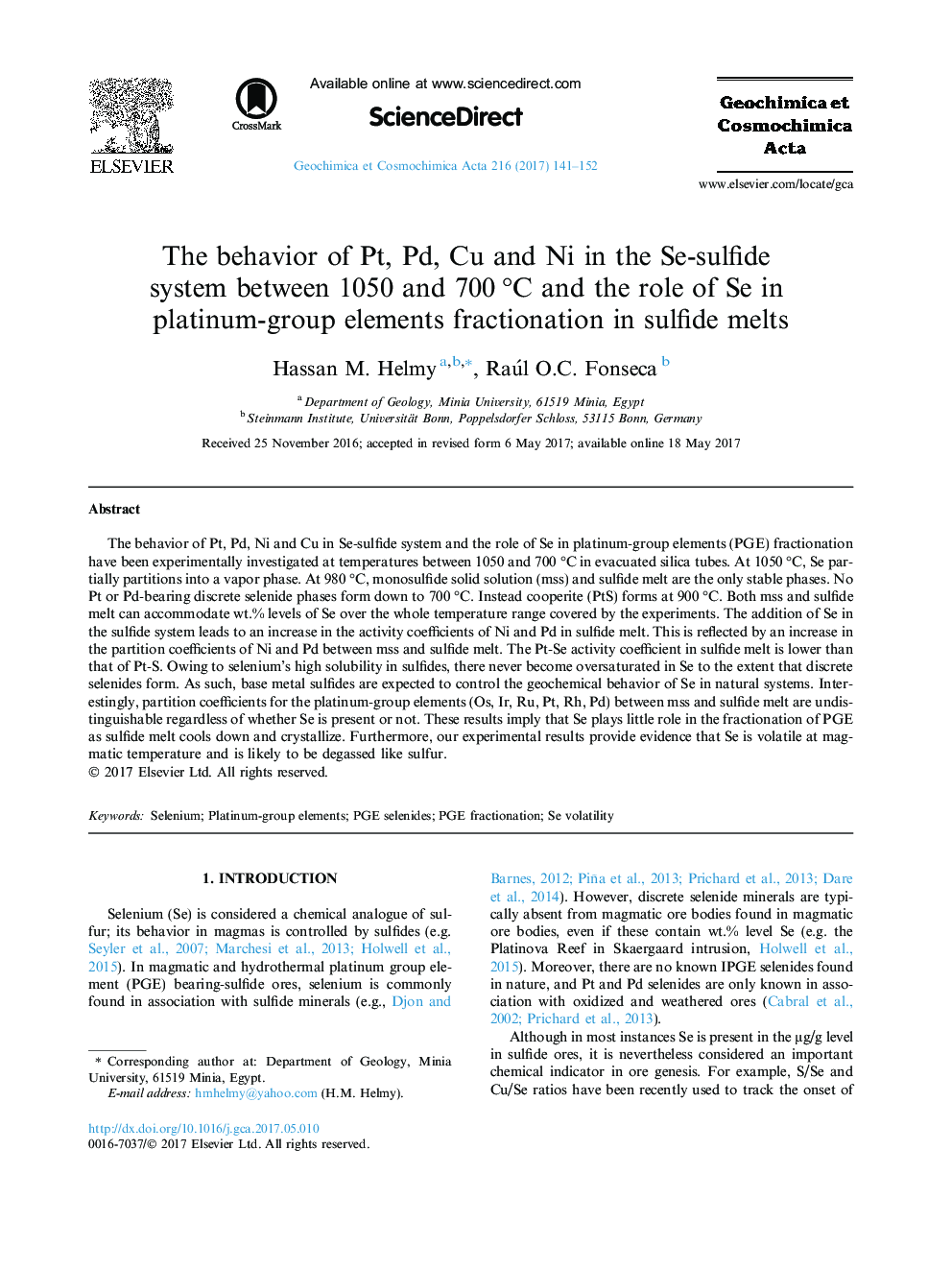| کد مقاله | کد نشریه | سال انتشار | مقاله انگلیسی | نسخه تمام متن |
|---|---|---|---|---|
| 5783113 | 1637941 | 2017 | 12 صفحه PDF | دانلود رایگان |

The behavior of Pt, Pd, Ni and Cu in Se-sulfide system and the role of Se in platinum-group elements (PGE) fractionation have been experimentally investigated at temperatures between 1050 and 700 °C in evacuated silica tubes. At 1050 °C, Se partially partitions into a vapor phase. At 980 °C, monosulfide solid solution (mss) and sulfide melt are the only stable phases. No Pt or Pd-bearing discrete selenide phases form down to 700 °C. Instead cooperite (PtS) forms at 900 °C. Both mss and sulfide melt can accommodate wt.% levels of Se over the whole temperature range covered by the experiments. The addition of Se in the sulfide system leads to an increase in the activity coefficients of Ni and Pd in sulfide melt. This is reflected by an increase in the partition coefficients of Ni and Pd between mss and sulfide melt. The Pt-Se activity coefficient in sulfide melt is lower than that of Pt-S. Owing to selenium's high solubility in sulfides, there never become oversaturated in Se to the extent that discrete selenides form. As such, base metal sulfides are expected to control the geochemical behavior of Se in natural systems. Interestingly, partition coefficients for the platinum-group elements (Os, Ir, Ru, Pt, Rh, Pd) between mss and sulfide melt are undistinguishable regardless of whether Se is present or not. These results imply that Se plays little role in the fractionation of PGE as sulfide melt cools down and crystallize. Furthermore, our experimental results provide evidence that Se is volatile at magmatic temperature and is likely to be degassed like sulfur.
Journal: Geochimica et Cosmochimica Acta - Volume 216, 1 November 2017, Pages 141-152